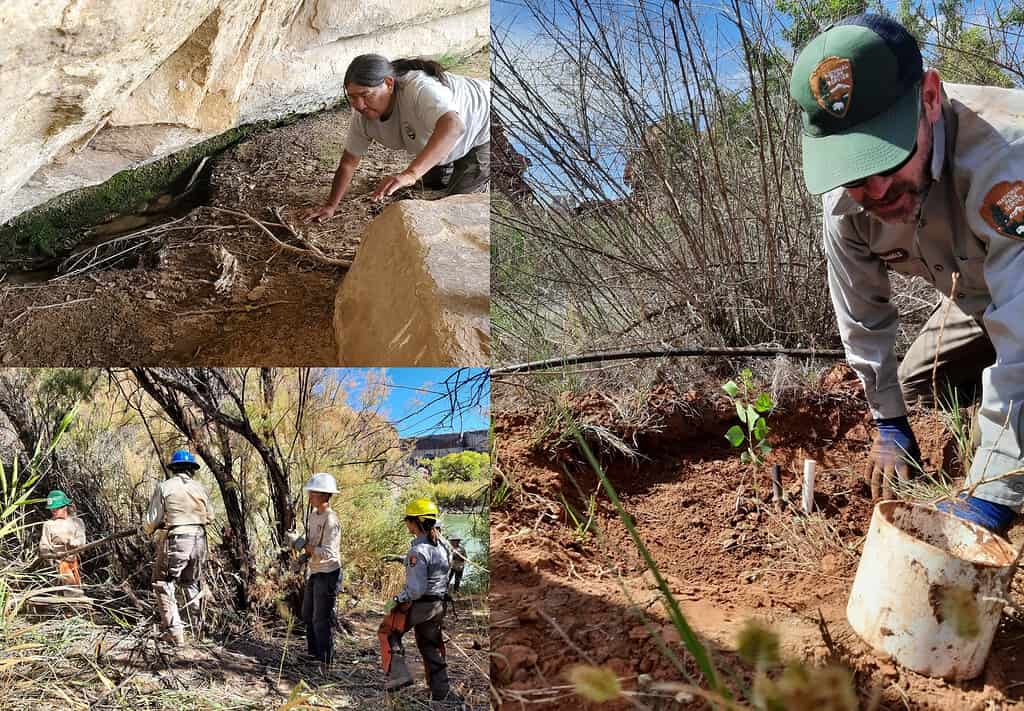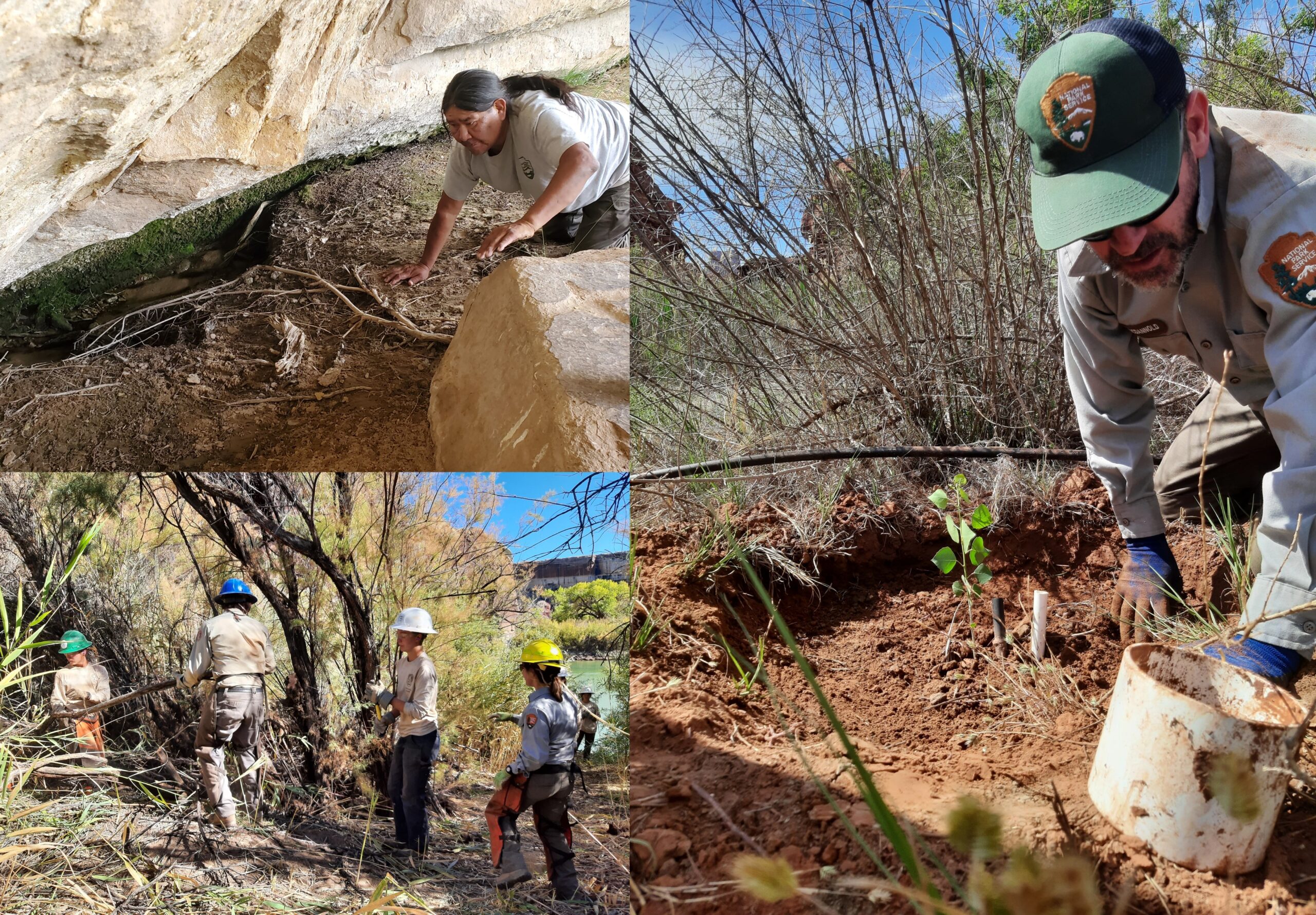Some information may be outdated.
Bipartisan Infrastructure Law providing $60,000

Liz Ballenger loves stands of large cottonwood trees, “like trees from a bygone era—I like to call them relic stands,” she says. Ballenger is the ecologist/vegetation program lead for the Southeast Utah Group of National Parks: Arches, Canyonlands, Hovenweep, and Natural Bridges. Her work in vegetation mainly deals with invasive plant removal, and subsequent revegetation with native species.
This fall, one of her main projects will focus on restoring riparian ecosystems at Canyonlands and Hovenweep with $60,000 in funding from the Bipartisan Infrastructure Law, which was signed in November 2021.
“The project statement was broadly written so that it encompasses a lot of various aspects of riparian restoration work,” Ballenger said. “That’s great, because it allows us to be flexible based on what the needs of each park are going to be, and how those needs might change over the course of the few years that the project is likely to be funded.”
The Canyonlands project will remove tamarisk at Cabin Bottom and Anderson Bottom (in partnership with the Utah Conservation Corps) along the Green River, and replace the invasive species with native cottonwood, box elder, and Goodding’s willow trees.
“One thing we’re trying to do more is protect stands of native trees, particularly the big old cottonwoods,” Ballenger said.
Cottonwoods have a hard time regenerating in Canyonlands, Ballenger said, because the park doesn’t receive the flood regimes that it used to. If the park loses those historic cottonwoods to a wildfire, the trees could be gone forever—and wildfires are more likely to grow if they can use the fuel buildup of dead tamarisk wood. Fires have burned cottonwoods in the past, Ballenger said.
To revegetate areas with native seedlings, park staff will float down the Green River after the water recedes to collect any sprouted seedlings. The staff then grow the seedlings in controlled locations at the park or with the local nursery run by Rim to Rim Restoration.
“We collect a lot of native seeds ourselves—a lot of the herbaceous species and native grasses and forbs,” Ballenger said. “We’ll collect seeds from the parks so that we have not just native species, but locally adapted native species.”
Restoring the native ecosystem can play two roles in the parks, Ballenger said: first, it’s beneficial for overarching ecosystem function. But also, native plants play a role in aesthetics—“I think it’s really important for visitors and for human users of the corridor to be able to experience intact native plant communities,” she said. Tamarisk removal at Cabin Bottom just began last week, and in addition to getting rid of the invasive plant, the removal will open up a few more camping spots.
The funding for the Canyonlands project is guaranteed through next year, and likely through fiscal year 2028, Ballenger said.
The BIL funding will also benefit a project at the Hovenweep National Monument. There, the park service is partnering with and consulting local Tribes to maintain water springs like the Square Tower Spring and Hackberry Pool.
According to the National Park Service, during ancestral occupancy of the Hovenweep area, the water resources were actively managed.
“Indigenous people built check dams and walled springs, basins, and reservoirs to improve access to surface water and potentially augment groundwater recharge … Spring water quality was managed through techniques including clearing debris from springs and cleaning sediment from ponded areas,” a park service article reads. “Today, those techniques are no longer actively used at Hovenweep.”
“There’s a lot that needs to be incorporated into restoring these springs,” Ballenger said. “And traditional methods I think are going to be key to that—we’re bringing the people back who are associated with these areas that are really sacred to them.”
The BIL funding will allow the NPS to pay associated travel costs and consulting costs to Tribal members, she said; in Canyonlands, the funding will go toward hiring more staff.
Appreciate the coverage? Help keep local news alive.
Chip in to support the Moab Sun News.





